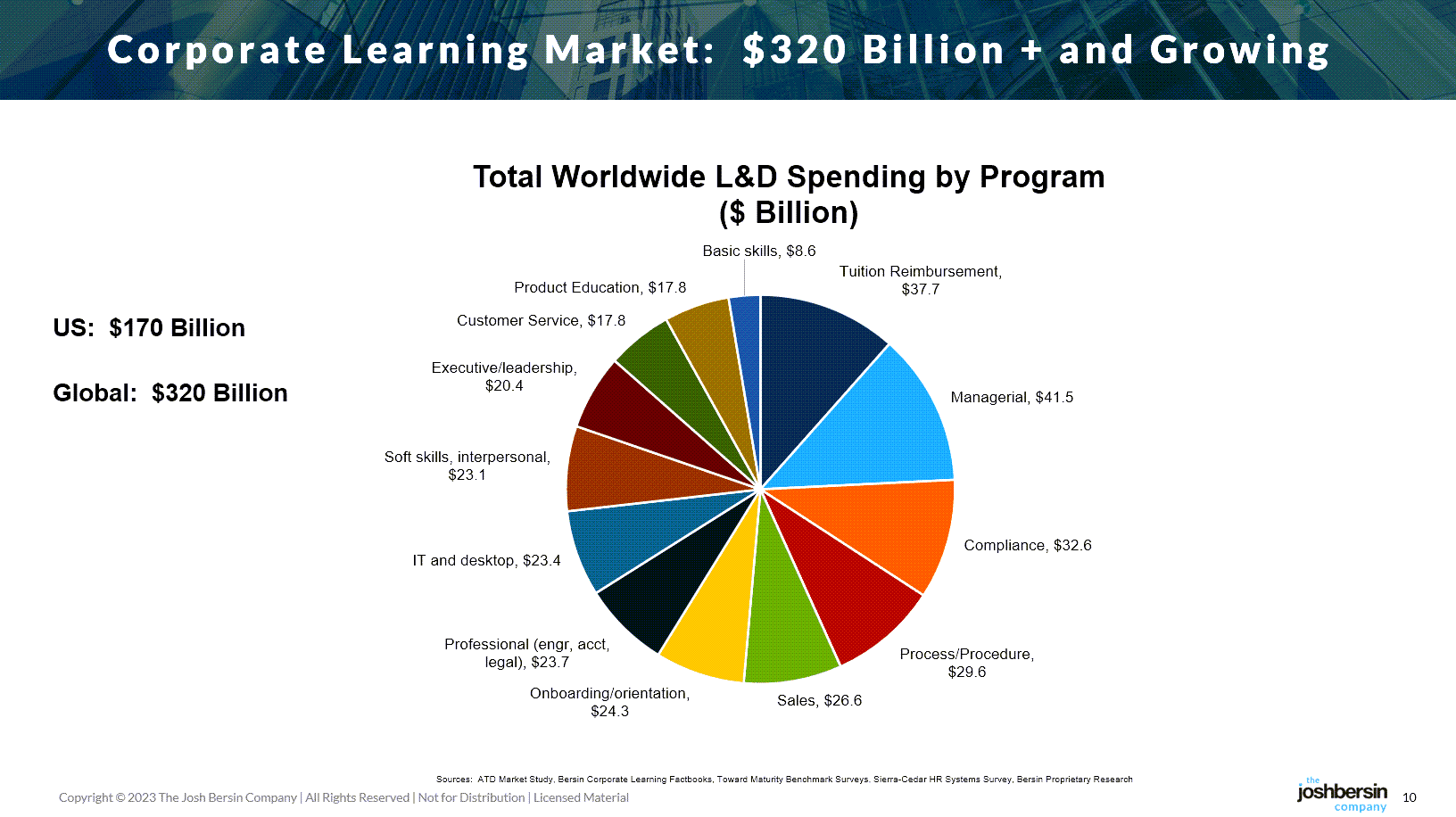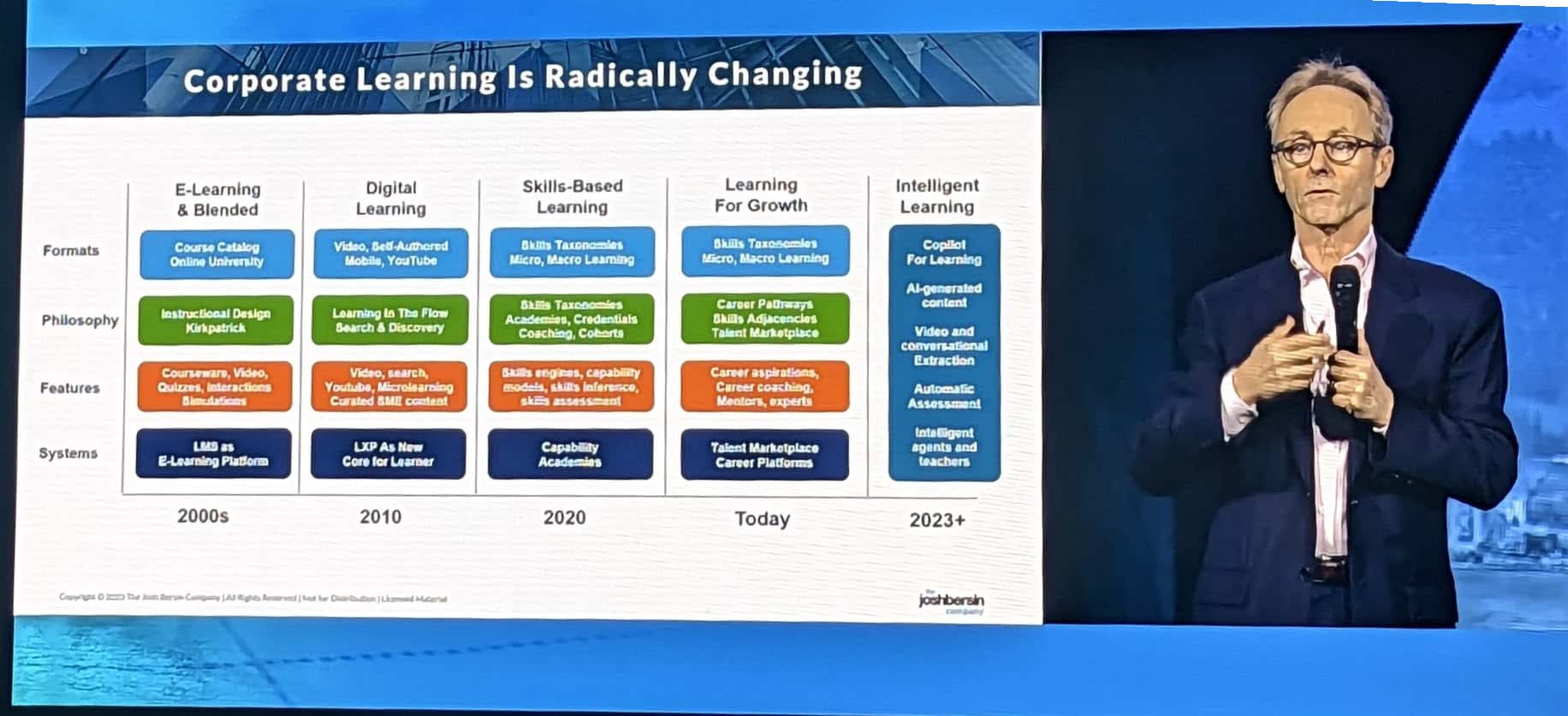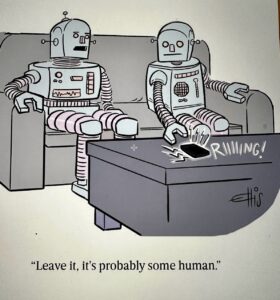EdTech Is Going Crazy For AI
This week I spent a few days at the ASU/GSV conference and ran into 7,000 educators, entrepreneurs, and corporate training people who had gone CRAZY for AI.
No, I’m not kidding. This community, which makes up people like training managers, community college leaders, educators, and policymakers is absolutely freaked out about ChatGPT, Large Language Models, and all sorts of issues with AI. Now don’t get me wrong: I’m a huge fan of this. But the frenzy is unprecedented: this is bigger than the excitement at the launch of the i-Phone.
And to fuel all this excitement, there were more than 100 AI-powered tools and startups showing off their stuff. There’s the GSV 150, the top 150 EdTech (Learning Tech) companies already doing well, and then the Elite 200, 200 startups competing for venture cash. And as you browse through all these startups you see an amazing grab-bag of tools for content development, virtual worlds, adaptive learning, and much much more.
So let me give you some perspectives on this frenzy, because I’ve seen this happen before.
First, in the corporate space, where I spend my time, the market for these technologies is massive. The worldwide spending on corporate learning is around $320 Billion and this is a nearly recession-proof market always looking for new ideas. Every onboarding, sales training, leadership development, and compliance program needs new tools and delivery systems, so there’s lots of opportunity for innovation.
 |
In fact our latest big research study on corporate learning found that two things drive success in L&D today: the first is focusing on employee growth, not just skills – and the second is the need for more useful, interactive “learning in the flow of work.” Well L&D managers all over the world are looking for new ideas, so some of these 200 new startups are likely to become billion dollar businesses.
Second, the L&D market is about to get disrupted like never before. I had two interactive sessions with about 200 L&D leaders and I essentially heard the same thing over and over. What is going to happen to our jobs when these Generative AI tools start automatically building content, assessments, teaching guides, rubrics, videos, and simulations in seconds?
The answer is pretty clear: you’re going to get disrupted. I’m not saying that L&D teams need to worry about their careers, but it’s very clear to me they’re going to have to swim upstream in a big hurry. As with all new technologies, it’s time for learning leaders to get to know these tools, understand how they work, and start to experiment with them as fast as you can. Some of them are skills engines, some are content machines, and others build interactive development experiences. Each has the opportunity to transform what you do.
 |
Third, you simply cannot slow this down. Quite a few people asked me “can’t we just wait for the market to settle down?” The answer is “no, absolutely not.” And here’s why: your employees and remote business units are going to use these tools whether you like it or not. Just as YouTube and the i-Phone democratized video (it used to be hard to author), Generative AI will quickly democratizing all forms of learning.
 And it’s even more disruptive than you think. Imagine when your company embraces ChatGPT Enterprise or the new tool Glean to give employees a curated, validated chatbot that accesses your company’s training and documentation online. Employees will use it and immediately stop looking at your page-turning compliance course.
And it’s even more disruptive than you think. Imagine when your company embraces ChatGPT Enterprise or the new tool Glean to give employees a curated, validated chatbot that accesses your company’s training and documentation online. Employees will use it and immediately stop looking at your page-turning compliance course.
If you’re building a course on “how to use Workday” or something similar you can now assume that the “informational aspects” of this training can be delivered by a bot. So your instructional design cheese just got moved.
I suggest you revisit Bloom’s Taxonomy. Rather than build courseware or videos for the “Knowledge” and “Comprehension” level of the model, can this be provided by a ChatGPT bot with access to all your company’s procedures and documentation? (Even the “Synthesis” part of learning may be best learned by bot.)
I know L&D professionals are problem solvers at heart. Now you can help build the “information bot” and spend your time on deep skills development, softskills education, high fidelity content, assignments, and simulations. And spaced learning, an innovation that adds huge value, will get easier than ever before. Our new Josh Bersin Academy is not only going to have more simulations and videos, but also mobile-enabled “micro-learning nudges” to help you learn on the job.
What does this mean for your LMS, talent management system, and all the analytics infrastructure in learning? Well that too is about to get disrupted.
New systems like Eightfold, Gloat, Docebo, Cornerstone, LinkedIn Learning, and Degreed are also getting “AI-superpowered” so they can pinpoint content that aligns with your skills requirements, find and discover learning quickly, and eventually use neural networking to give you precisely the micro-training you need.
One of the hot AI vendors I admire is SeekOut, for example. While their talent intelligence system is currently targeted toward recruiting, its new features let you quickly see the detailed technical skills for a single engineer by reading and analyzing their GitHub and other submitted work (Eightfold also does this). They can then “group” these skills by team and you or the CIO can look at tech teams and figure out which teams are missing which skills. This kind of “team-based” assessment has never really been possible before: the CIOs who saw it immediately want L&D to get on board.
And there’s much much more to come. The team at STRIVR (leaders in Immersive learning) are experimenting with AI to build 3D simulations faster. Vendors who sell leadership development are looking at highly trained intelligent coaches (watch out BetterUp, CoachHub, and Torch), and the team at CoRise are using AI to offer “virtual teaching assistants” with deep training in the technical domain of each class.
I have no doubt that learning will be one of the biggest markets for Generative AI, LLMs, and intelligent Chat systems. The L&D and learning community is the most creative market of “tinkerers” I have ever worked with.
One final point. Should you be afraid for your job? Is it time to call it quits?
Absolutely not. The L&D market has been feeling stale for a while and these new tools will breathe life into the space. Training, education, and the knowledge sharing are among the biggest opportunities in business.
Go watch a few videos on Large Language Models, get over your fear of AI (we have lots of high level learning to help you feel comfortable), and jump in with both feet. While the vendor market is confusing and immature, the impact of these technologies will be massive.
Let’s all jump in and enjoy the ride.
Additional Information
What Is A Neural Network? Fantastic Overview Of How AI Systems Work.
Redesigning HR: An Operating System, Not An Operating Model.
Why Is The World Afraid Of AI? The Fears Are Unfounded, And Here’s Why.
The Stanford University AI Index: Measuring trends in Artificial Intelligence
SeekOut Brings GPT4 To Recruiters. Eightfold Launches Copilots For HR.
Workday’s Response To AI and Machine Learning: Moving Faster Than Ever
Yann LeCun and Andrew Ng: Why the 6-month AI Pause is a Bad Idea


